Iran Protests Intensity Highest Since 1979
The ayatollahs face the biggest challenge to their authority in the history of the regime.
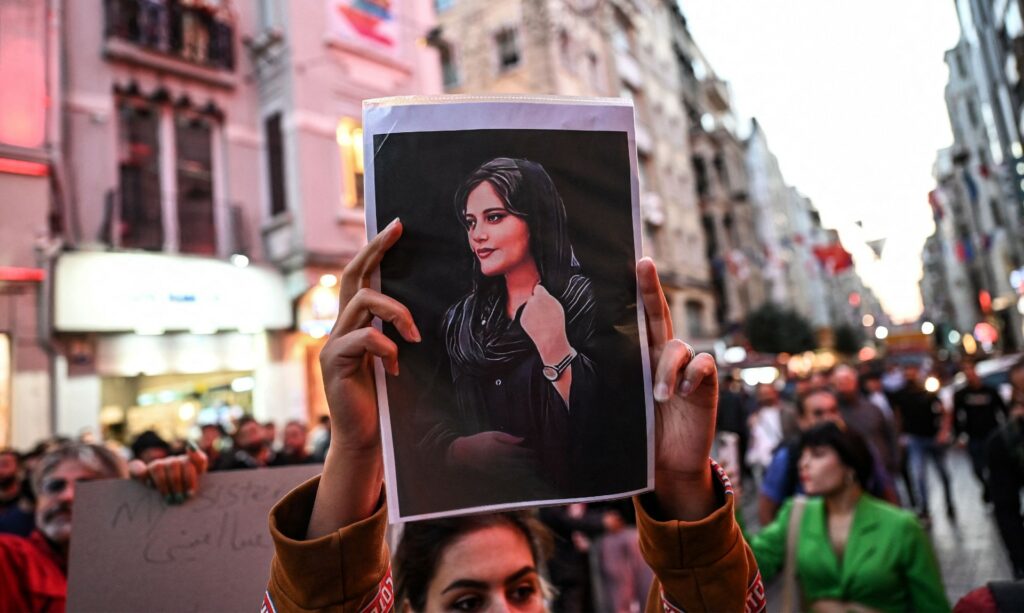
Farnaz Fassihi reporting for NYT (“Iran Protests Surge to Dozens of Cities“):
The largest anti-government protests in Iran since 2009 gathered strength on Saturday, spreading to as many as 80 cities, even as the authorities escalated a crackdown that has reportedly killed dozens of people and brought the arrests of prominent activists and journalists, according to rights groups and news media reports.
Internet access — especially on cellphone apps widely used for communication — continued to be disrupted or fully blocked, affecting Iranians’ ability to communicate with one another and the outside world. News from Iran has trickled out with many hours of delay.
While the 2009 protests erupted over an election widely condemned as fraudulent, the current demonstrations seemed focused on the Iranian security forces, with reports of vicious beatings of security officers and firebombings of the local headquarters of the notorious morality police.
In many cities, including Tehran, the capital, security forces responded by opening fire on the crowds. On Boulevard Ferdous and at the Shahrak Ekbatan apartment complex in Tehran, officers fired at windows; in the city of Rasht, they threw tear gas into apartments, according to witnesses and videos on social media.
Iranian state media said late Friday that at least 35 people had been killed in the unrest, but human rights groups said on Saturday that the number is likely to be much higher. A previous death toll of 17 issued by the state news media included at least five members of the security services.
[…]
Deep resentments and anger have been building for months, analysts say, particularly among young Iranians, in response to a crackdown ordered by the country’s hard-line president, Ebrahim Raisi, that has targeted women.
That comes on top of a litany of complaints over the years over corruption, mismanagement of the economy, inept handling of Covid and widespread political repression. The problems have persisted under Mr. Raisi, who came to power in an election in which any potential contenders were eliminated before the vote, particularly those from the reformist faction.
During the tenure of Mr. Raisi’s predecessor, the moderate Hassan Rouhani, the morality police had been discouraged from enforcing Iran’s often draconian laws against women, particularly the requirement that they wear the hijab in public in the “proper” fashion. But Iran’s powerful supreme leader, Ayatollah Ali Khamenei, who is now said to be resting in bed after emergency surgery, engineered the ascent of Mr. Raisi, eliminating an important outlet for the frustrations of Iran’s younger generation.
Those frustrations are now boiling over. The small, mostly Kurdish city of Oshnavieh reportedly fell to protesters when local security forces retreated after days of intense fighting, a paramilitary leader and the editor of a Kurdish news site said.
A companion piece by Vivian Yee and Fassihi (“‘They Have Nothing to Lose’: Why Young Iranians Are Rising Up Once Again“) dives deeper:
The 22-year-old woman emerged from the Tehran subway, her dark hair covered with a black head scarf and the lines of her body obscured by loose clothing, when the capital city’s Guidance Patrol spotted her. They were members of Iran’s notorious morality police, enforcers of the conservative Islamic dress and behavior rules that have governed daily life for Iranians since the 1979 revolution, and newly energized under a hard-line president who took office last year.
By their standards, Mahsa Amini was improperly dressed, which could mean something as simple as a wisp of hair protruding from her head scarf. They put her in a van and drove her away to a detention center, where she was to undergo re-education. Three days later, on Sept. 16, she was dead.
Now, over eight days of rage, exhilaration and street battles, the most significant outpouring of anger with the ruling system in more than a decade, her name is everywhere. Iranian protesters in dozens of cities have chanted “women, life and freedom” and “death to the dictator,” rejecting the Iranian Republic’s theocratic rule by targeting one of its most fundamental and divisive symbols — the ailing supreme leader, Ayatollah Ali Khamenei.
In several of the videos of the uprising that have torn across social media, women rip off their head scarves and burn them in street bonfires, including in deeply religious cities such as Qum and Mashhad. In one, a young woman atop a utility cabinet cuts off her hair in front of a crowd of roaring demonstrators. In another, young women dare to dance bareheaded in front of the riot police.
“Death to the dictator,” protesters at Tehran University chanted on Saturday. “Death to the head scarf! Until when must we tolerate such humiliation?”
[…]
[W]itnesses say the demonstrations, which spread to at least 80 cities on Saturday, are the most forceful, vitriolic and emboldened they can remember, far more intense than the previous tremors of unrest. Desperate to damage the powers-that-be before the inevitable crackdown, videos circulating on social media and shared with The New York Times show, protesters have set fire to security vehicles and assaulted members of Iran’s widely feared paramilitary forces, in some cases killing them.
[…]
With Iran’s economy at a nadir and Ayatollah Khamenei in ill health, the government is likely to dig in rather than show any signs of weakness, analysts said. But violence will only buy time, they say, not long-term peace.
The regime’s top leaders have “always said, ‘We’re not going to make concessions, because if we make one small concession, we’ll have to make bigger concessions,'” said Mohamed Ali Kadivar, an Iranian-born sociologist at Boston College who studies protest movements in Iran and elsewhere. “Maybe they’ll push people off the street, but because people want change, repression is not going to stop this. Even with a crackdown, then they would just go home for a while and come back.”
Avenues for pushback have dwindled in recent years, leaving Iranians with only protest as a means of demanding change. Just how much their political freedoms had shrunk became clear last year, when the country’s leadership disqualified virtually all candidates except the supreme leader’s preferred one, the ultraconservative Ebrahim Raisi, from the presidential election. In the process, they degraded what had once been a forum for Iranians to debate political issues and choose their representatives, even if the candidates were always preselected from within the governing apparatus.
Mr. Raisi opposed returning to the 2015 nuclear deal with the United States that had put limits on Iranian nuclear development in exchange for lifting sanctions and economic openness. His election, combined with the worsening economy, left Iranians who craved better opportunities, more social freedoms and closer ties with the rest of the world in despair.
[…]
“The reason the younger generation is taking this kind of risk is because they feel they have nothing to lose, they have no hope for the future,” said Ali Vaez, Iran director for the International Crisis Group, noting that protests were now a regular feature in Iran.
By continually blocking reforms, the country’s leadership has “created a situation where people no longer believe that the system is reformable,” he added. “I think people would be willing to tolerate a milder version of the Islamic Republic, but they’ve just entrenched their positions and have created this situation. It’s turned Iran into a tinderbox.”
In a WaPo op-ed, the Carnegie Endowment’s Karim Sadjadpour explains “What the West should learn from the protests in Iran.”
It’s premature to assess whether these protests will meaningfully change Iran’s politics, or whether they are simply another crack in the edifice of a rotting regime whose lone source of diversity is whether the beards and turbans of its ruling men are black or white. Yet one conclusion can already be drawn: Amini’s killing, and Iranian society’s response to it, should permanently alter how the outside world interacts with Iranian officials. And that shift in awareness should also include a fundamental reassessment of its own Iran policy by the Biden administration.
Amini’s case was not isolated. According to human rights groups, every year millions of women are stopped and harassed in Iran for “improper hijab,” and numerous Iranian women are serving double-digit prison sentences for refusing to veil. This system of institutionalized violence has little to do with presumed Iranian religious traditions; authentic cultural norms don’t need to be imposed by the threats of a police state. Compulsory hijab is one of the three remaining ideological pillars of Iran’s theocracy, along with “Death to America” and “Death to Israel.”
That helps to explain why the regime is so loath to take a soft line on the issue of dress codes. Iran’s supreme leader, Ayatollah Ali Khamenei, clearly believes that compromising on the regime’s ideological pillars — including hijab — will only hasten its collapse. “If we want to prevent our society from being plunged into corruption and turmoil,” Khamenei has said, “we should keep women in hijab.” It is a product of the same mentality that blames female sexual assault victims for dressing immodestly. Such antiquated views deserve no deference, whether espoused from Texas, Tokyo or Tehran.
The week of Amini’s death, CBS News correspondent Lesley Stahl interviewed hard-line President Ebrahim Raisi, who predictably raised doubts about the Holocaust and denied his well-documented role as a hanging judge who sentenced thousands of dissidents to death in the summer of 1988. Stahl wore a headscarf throughout the interview and admitted: “I was told how to dress, not to sit before he did, and not to interrupt him.” These outmoded rules of engagement should no longer be acceptable.
On Thursday, CNN’S Christiane Amanpour was granted an interview with Raisi in New York, but when she refused to wear the hijab, he didn’t show up. This was the correct response; now others should follow suit. History has proven that Iran only compromises when faced with a unified international front. Foreign governments, international news agencies and nongovernmental organizations should cease legitimizing the Islamic republic’s gender discrimination.
So far, so good.
While Tehran has on occasion bowed to external pressure, throughout its 43-year history the Islamic republic’s sole response to internal crises has been to double down on repression. It is this brutality that has sustained the government. But there are growing fractures in the foundation, at a time when the country is braced for a potential leadership transition due to 83-year-old Khamenei’s uncertain health. While the Islamic republic’s security forces may appear in control for the moment, there are far more signs of regime frailty in Iran today than there was in Egypt and Tunisia in December 2010, weeks before their governments were overthrown.
The unrest triggered by Amini’s killing should push the Biden administration to reassess its Iran strategy. Until now, the sole focus of U.S. policy toward Iran has been a fruitless attempt to revive the 2015 nuclear agreement that President Donald Trump exited in 2018. This is shortsighted. So long as the leaders of the Islamic republic — whose identity is premised on opposing the United States — rule Iran, Washington will never be able to reach an accommodation with Tehran. Rather than responding to the symptoms of Iran’s ideology, Washington — and the West — must focus on its root cause, the regime itself.
It’s indisputable that the post-revolutionary regime of the mullahs is totalitarian at home and a force for the spread of extremism abroad. Pretty much since the fall of the shah in 1979, US administrations of both parties have isolated Iran and sought to bolster the elusive “Iranian moderates” in hope of steering reform from within. Our history of “regime change” in the region, however, has not exactly been stellar.
The advent of a representative Iranian government that puts the country’s national interests before its revolutionary ideology could be a geopolitical game changer for the United States. Tehran has enormous influence in four Arab capitals — Damascus, Beirut, Baghdad and Sanaa — and has provided financial and military aid to anti-American dictatorships in Caracas and Pyongyang. The Russian government has begun using Iranian kamikaze drones against Ukraine. Iranian arms are fueling Africa’s wars. In virtually every cold or hot war in the world today, Tehran aligns itself against the United States.
Again, that’s certainly right. Getting there, however, is easier said than done.
During the Cold War, the United States negotiated arms control deals with the Soviet Union even while denouncing the “evil empire” and imploring Soviet leader Mikhail Gorbachev to “tear down this wall.” It is time for the Biden administration to broaden its Iran strategy not only to focus on countering the destructive aspirations of the Iranian regime, but also to champion the aspirations of the Iranian people to live in a free society at peace with the world.
Iran’s transition from theocracy to democracy may not come easily, peacefully or soon. But it is the single most important key to transforming the Middle East.
The exact dates of the Cold War are debatable but Wikipedia’s March 12, 1947 – December 26, 1991 is quite reasonable. Call it 44-1/2 years. The ayatollahs have been running Iran since February 11, 1979—43-1/2 years. Alas, they have not produced a Mikhail Gorbachev.
I’m happy to further isolate the regime and for Western journalists to refuse to accede to their demands. (Although, in fairness to Stahl, her interview took place at the presidential palace in Teheran whereas Amanpour’s interview took place in the United States.) The Biden administration is absolutely right to directly target the leadership of the “morality police” with sanctions and to relax existing sanctions on Iranian Internet access to help the protestors get the word of their activities out. We should be very careful, indeed, though about appearing to actively try to topple the regime.

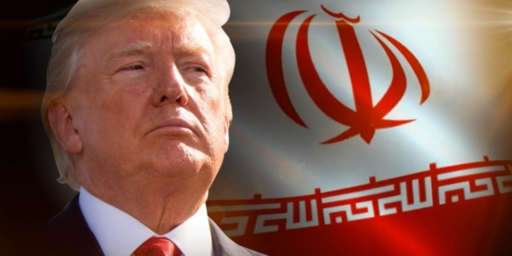
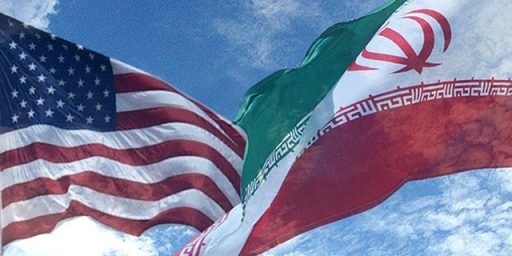
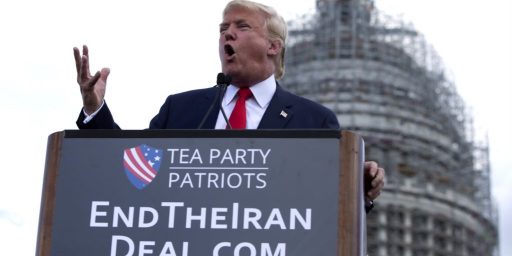
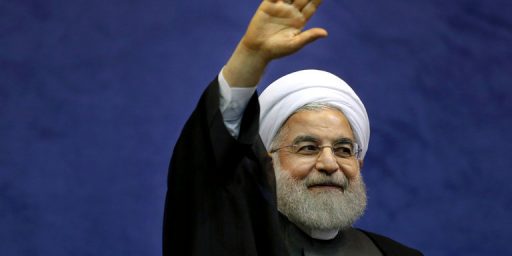
The authorities will continue to crush the will of the Iranian people, not out of some religious fervor, but because the theocracy provides cover for a kleptocracy built upon graft. As it always is for authoritarian states.
As was shown in Putin’s pre-Ukraine Russia and in China, if the authorities allow the populace to make comfortable lives for themselves, they’ll ignore the corruption and the political repression at the margins. In Iran, (and for that matter Saudi Arabia) that lesson is ignored, leaving the people little choice but to rebel.
Religious authority ultimately depends upon controlling what information people are exposed to.
From Martin Luther onward we have seen technology tear down systems that kept religious authority in place, and this is just another example.
In “free” countries we are far more sophisticated, realizing that the people will seek out affirming information that makes them feel better about themselves – no need to hide other viewpoints, one must simply dismiss them as heresy or foolishness.
Iran will learn that lesson as well, eventually.
@Reza:
When Iran stops sponsoring terrorism and stops trying to build nuclear weapons, the sanctions will come off. It is entirely in the Ayatollah’s hands. Stop supporting terrorists, stop building nukes. Or continue supporting your medieval, repressive, woman-hating government, and let Iran sink further into poverty, isolation and irrelevance.
Iran and the US should be natural allies. We used to be. It’s a great big, fascinating world out here, a world you could be part of.
Did I just have a stroke and respond to a hallucination?
*cough*Mosaddegh*cough*
If the protests really break through into the US news cycle, the Republicans will start blaming Biden for not toppling Iran’s government, and will provide propaganda for the Iranian government. They will be stepping over themselves to make more and more extreme statements, which will then be shown on Iranian TV to convince the elusive Iranian moderates that this is all a US plot.
The poor state of the US media, which have basically ignored the Iran protests, is actually doing us a favor so far.
@Gustopher: The NYT, WaPo, WSJ, NPR, and others have been covering them for days. Maybe not Fox News?
I remember seeing photos of Iran in the 60’s. Aside from the facial features, they were indistinguishable from photos of the US in the 60’s.
I’ve known some Persian families, and what they’ve conveyed is that the regular people there tend to like Western things (fashions, etc.). We both kinda dislike the other’s governments, but otherwise we’d get along famously.